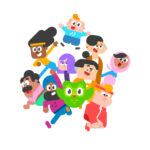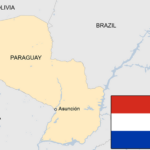A sweet moment here in Kyiv recently: hearing a guy from Ukraine greet a guy from Turkey outside the grocery store with, “Bonjour, Como esta Usted?” I giggled. Global village, indeed.
One of the many things I admire about my host here in Kyiv is the relationships she’s built with people selling fruits, veggies, nuts, meat, whatever around her house or the nearest super market. She buys regularly from them instead of the big grocery right next to them whenever possible, and as a result, many of the vendors know her. The place she buys her meat from is run by a Turkish man (yes, the aforementioned) and his family, and they are always so kind – once, we were heading to his store and met him, walking away – he’d closed for the day. He turned around and opened back up just for us.
And that brings to mind this: one of the best pieces of advice I ever got before I moved abroad to Germany back in 2001 was from a woman in Austin, Texas, where I was living at the time, who said, “Find a restaurant near your house that you can go to every week, on generally the same day and time, buy a coffee or a meal, and sit there a while. Find a little shop or store or stand that has something you want to buy every day, or every week, at generally the same time. Become a ‘regular’ at such places, and those people will look out for you.” And she was DEAD ON. When language is a barrier, it’s a way to breed familiarity, and with familiarity can come friendliness – which is something you really crave when you’re in a country where you not only can’t understand the spoken language, but you can’t read it either.
Not that my host has any problem with language as a barrier – she’s lived abroad for most of her adult life, and previously lived in Russia and Moldova. With my live-in fixer, I’ve become completely spoiled. I haven’t been into any store or shop without her. Instead of being lonely and scared my first three weeks here, I’ve been delighted – and jumped right into work. I really can’t thank her enough. Sadly, the gravy train is ending – her husband’s nephew will be taking over my room in a week. My free Internet, free laundry service, and free cook are all going away (I’ve been buying groceries and alcohol whenever they will let me to show my appreciation!). What an amazing gift she’s given me!
The generosity of my American friend here has been ENORMOUS. Because of her, I’ve not only had a wonderfully cheap and beautiful place to live, I’ve had her by my side for every grocery store visit, to navigate everything once must deal with whilst being abroad (like money exchange), she’s fed me I don’t know how many times, she and her husband have entertained me, and on and on. I’ve been SPOILED.
At last, I will move into my own apartment, behind a row of apartments on Mechnikova, a very main street in Kyiv and very near my workplace (no more car to and from work – I’ll be walking). It’s on the 3rd or 4th floor – can’t remember which. It’s a small one bedroom, and the furnishings look like any usual Eastern European place – which I’m fine with. As long as a place is clean, comfortable, quiet and safe, I really don’t care how it looks. It has bathtub (hurrah!), wi fi, fridge, tiny scary stove, cookware, and a washing machine. My host will tell me how to get free TV on my computer, so I’ll be able to watch stuff at night, something I haven’t done since I arrived – and would really like to do.
My new place also is very near a shop called Good Wines. It’s like Whole Foods except, with the local currency so weak against the dollar, way way cheaper, and without the attitude of Whole Paycheck. They’ve got good bread, good cheese, and of course, good wine. And lots of bourbon! And there is a money exchange inside. But I’ll need to find a cheaper, normal grocery as well – and load up on veggies while the sidewalk stands are still around.
I’ll be in my apartment for five weeks. That will make 9 weeks in Ukraine, not 8. Realizing that, at the end of next week, I will NOT be at the halfway point depressed me. Yes, I’m loving it here, but I’m also counting down the days – I miss Stefan, my house, and not-my-cat terribly. And on the start of holiday weekend here in Kyiv, for some reason, I got really, really homesick. I just wish so much Stefan could experience this place with me.
So, here’s a down side to Ukraine – because you knew there’d be a downside, right? There’s a group of ultra-nationalists in Ukraine, and I’m quite wary of them – as I am of all ultra-nationalists, regardless of if I love the country or not. At an adorable restaurant that was flying the ultra-nationalist flag, there’s also a really nice little folk art shop inside. I really liked it – until I saw, on the rack of jewelry, they not only have 2 or 3 swastika pendants for sale, they are also selling the Fascist Black Sun symbol as jewelry and pottery. Yes, they were swastikas – not the Buddhist version of the symbol, not the American Indian version of the symbol, neither of which have anything at all to do with Nazism. They were old fashioned, plain, Nazi swastikas. My eyes almost popped out of my head. I kept staring at them, and then back at all the staff in their little folky faux historical outfits and thinking, are you wearing one of these under your clothes RIGHT NOW?!? Apparently, it’s a great vegetarian restaurant. I’m thinking, “Yeah, you know who else was vegetarian…”
As you all know, trucks from a Russian convoy said to be carrying humanitarian aid crossed the border into eastern Ukraine last week, without the consent of the Ukrainian government and unaccompanied by Red Cross escorts, as had been earlier agreed. If Ukraine fired on the convoy – a convoy which, by all accounts, had violated the sovereignty and integrity of the country, would it thereby give Russia a public excuse for a full invasion? On the one hand: what would the US do if Cuba did this in the USA? On the other hand – I don’t want war. I’m a peacenik. I am. The convoy has returned to Russia… but I continue to fear provocation.
Also, this story does a good job, IMHO, of explaining why the West has trouble jumping into the Ukraine v. Russia conflict – the misinformation by both sides is really troubling.
Speaking of misinformation, the governor of Texas, Rick Perry, says that there are “historic” levels of border crossings from Mexico into the USA, and the people crossing are “from countries with terrorist ties.” Which countries? Perry specifically referenced Ukraine. And I just sat there, staring at the story and the comments and thinking, people voted for this idiot. PEOPLE STILL VOTE FOR THIS IDIOT. My host’s husband’s comment, in his lovely Ukrainian accent, “Mexican Ukrainian Terrorists. Yeah, right.” Sigh…
POSTSCRIPT: I got chastised this morning, by someone I respect very much, for writing the reference about the swatstika in the restaurant – she says it’s a symbol from Mezine, that’s all.
The so-called Confederate flag that we’re all so familiar with is actually the Confederate battle flag. While the Civil War was certainly about slavery – a read of the declaration of South Carolina withdrawing from the union confirms that (for all those many people who like to pretend the Civil War wasn’t about slavery) – the Confederate battle flag was much more of a symbol for the soldiers than a symbol for slavery – and was NOT the flag of the Confederacy. I know that, but most people do not. And now, in 2014, the flag is, unquestionably, a symbol of racism. It was added to the flags of various Southern states in the 1950s specifically to affirm white racial control over black Americans. Now, and for many years, it is used, primarily, by people that glorify a horrible time in my country’s past and the oppression of an entire race. It’s not the symbol it started out as, but I must accept the symbol that it’s become. As I’m from a state that was built on slavery, and where slavery was legal until December 18, 1865, and where Black Americans were horrifically oppressed until the 1960s – and even today, don’t have a very good experience – I will not display the Confederate flag under any circumstances, even though its origins aren’t specifically tied to slavery. What this symbol has become most definitely is associated with racism, and I wouldn’t subject anyone to that kind of discomfort by displaying the flag in my home and hoping they know its history – and mine – and aren’t offended. I would never expect a visitor to my home – nor to anywhere in the South in the USA – to know the history of a Confederate flag on display anywhere so casually – not when it’s so deeply associated now with my country’s very worst racism.
Displaying swastika, the symbol that the world has come to know as the symbol of Nazism – of so-called racial “purity”, of ultra-nationalism – comes with even more responsibility. While the symbol was used by ancient Celts, native Americans, and Greeks (I have a photo of it embedded within an ancient Mosaic in Macedonia), and is used in Buddhism and Hinduism, all to mean very different and rather benign, even loving things, things that I love and treasure, the symbol is now, world wide, associated with the darkest chapter in human history. Today, when it shows up in archival photos of the Corn Palace in South Dakota, as part of the area’s celebration of native American culture, it comes with a prominent disclaimer, explaining in detail the history of the symbol in that specific area, to the local culture, and assuring viewers it has nothing whatsoever to do with Nazis. Any time the swastika is displayed in a historical context that I’ve seen, a context unrelated to Nazism, it has a lengthly explanation displayed of its non-Nazi origins, to assure no misunderstanding by any viewer. To display this symbol now – on a pendant, for sale in a gift shop – without such and explanation, evokes justifiable feelings of pain and even outrage by a viewer. In a country like Ukraine that has a destructive history with Jewish people, where the rich Jewish culture of Ukraine was largely wiped out, to display such a symbol comes with an extraordinary amount of responsibility, even if the symbol has an ancient association not at all associated with Nazism. This particular restaurant – and anyone else who displays the symbol – cannot assume that people will look at a swastika – the ultimate, widespread symbol of the worst kind of hate – on a pendant, and assume it means anything other than the worst human beings can be.
Before I wrote that piece, I did a bit of research on the symbol in Ukraine – something 90% of foreigners who walked into that restaurant wouldn’t do. I typed in Ukraine swastika into Google. On the second page (which most people wouldn’t have gotten to, having scanned just page one of the results), after a long list of articles about the symbol as associated with Nazism in Ukraine, came a Wikipedia page about Mezine. There was a reference to a swastika symbol used in this ancient site, but no photo that indicated it looked anything like what the Nazis used. At last, today, I found this photo from the site. Perhaps this restaurant could post this photo and a lengthly explanation about Mezine, the ancient association of the symbol, and how they, the restaurant, most certainly are not in any way associating the symbol with Nazism – something every other culture, from American Indian to Buddhist, now does, in order to preserve the use of the symbol in their culture.
If Ukraine truly wants to be a part of Europe, where the genocide took place, including partially in Ukraine, it’s going to have to make it clear, every time it displays this symbol, exactly what is meant by such – just like anyone else claiming an alternative meaning to the symbol must do.
Followup from September 11, 2014, from an article in The Guardian:
“‘Putin’s not even a Russian. Putin’s a Jew.’… Dmitry – which he said is not his real name – is a native of east Ukraine and a member of the Azov battalion, a volunteer grouping that has been doing much of the frontline fighting in Ukraine’s war with pro-Russia separatists… Dmitry claimed not to be a Nazi, but waxed lyrical about Adolf Hitler as a military leader, and believes the Holocaust never happened. Not everyone in the Azov battalion thinks like Dmitry, but after speaking with dozens of its fighters and embedding on several missions during the past week in and around the strategic port city of Mariupol, the Guardian found many of them to have disturbing political views, and almost all to be intent on “bringing the fight to Kiev” when the war in the east is over. Many of its members have links with neo-Nazi groups, and even those who laughed off the idea that they are neo-Nazis did not give the most convincing denials… As for the swastika tattoos on at least one man seen at the Azov base, the swastika has nothing to do with the Nazis, it was an ancient sun symbol,” (claimed on of the fighters).’”
What, me worry?
Update March 13, 2019: My observations of the rise of the far right in Ukraine – and the denial of such – has stayed with me all this time, even five years later. And now we’ve seen the rise of similar far-right, ultra-nationalist movements all over the world, including the USA – and a proliferation of right-wing symbols as fashion statements. In this February 26, 2019 article “The Far Right’s Secret Weapon: Fascist Fashion,” The New Republic focuses on Europe’s now flourishing niche fashion industry of clothing, jewelry, flags and other accessories which offers symbols and paraphernalia that helps ultra nationalists recognize each other and feel a sense of camaraderie, even as outsiders aren’t immediately aware of what they are displaying. The article quotes New School sociologist Virag Molnar, who says a number of symbols employed by Europe far-right fashion brands, Molnar explained, “have been alternately used, embraced, tolerated, banned, later reconfigured and recycled by different regimes and have accumulated multiple layers of meaning.” It gives them an ability to play coy with symbols, like runes appropriated by the SS.
Sometimes, I really, really don’t like being correct in an observation. And this is one of those times…












Leave a Reply